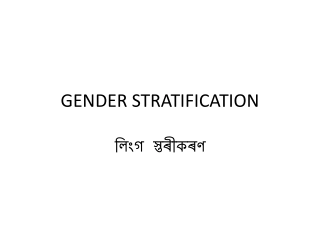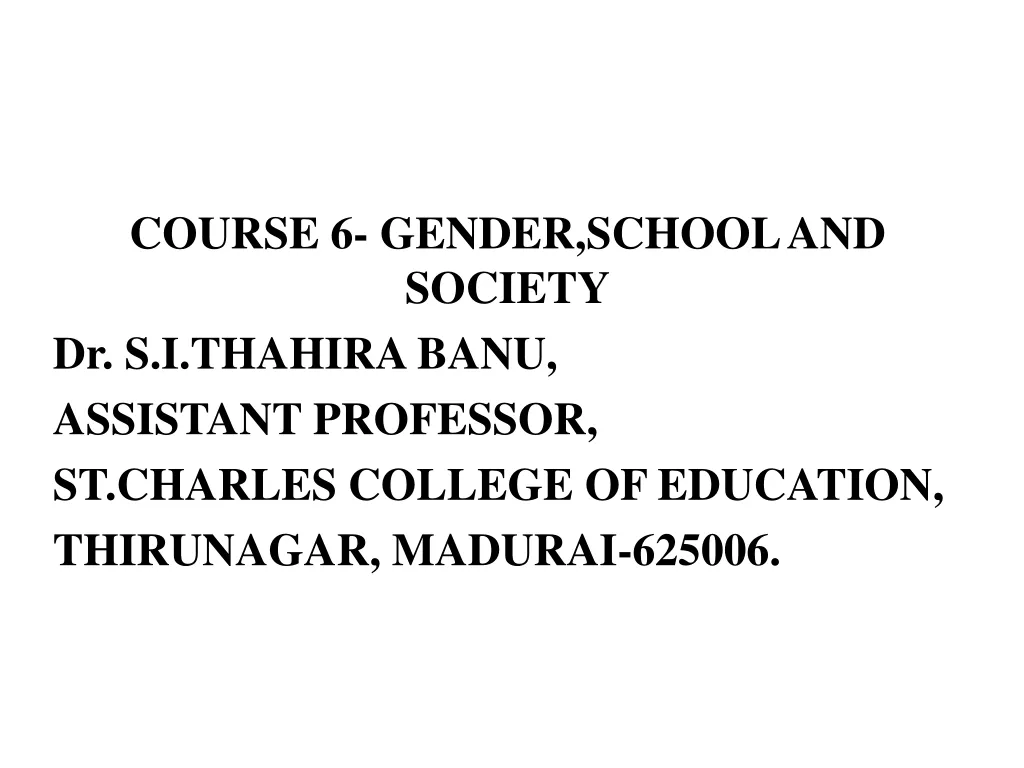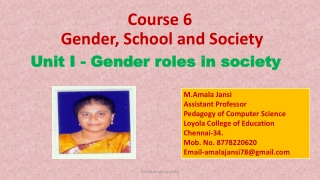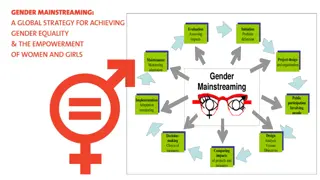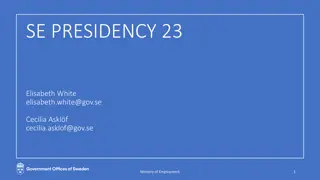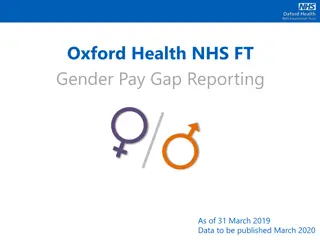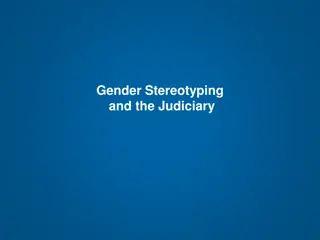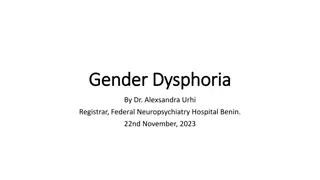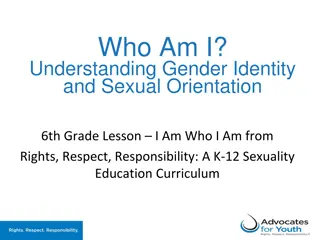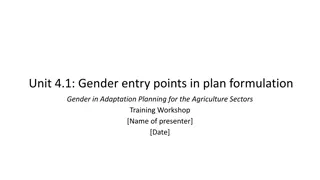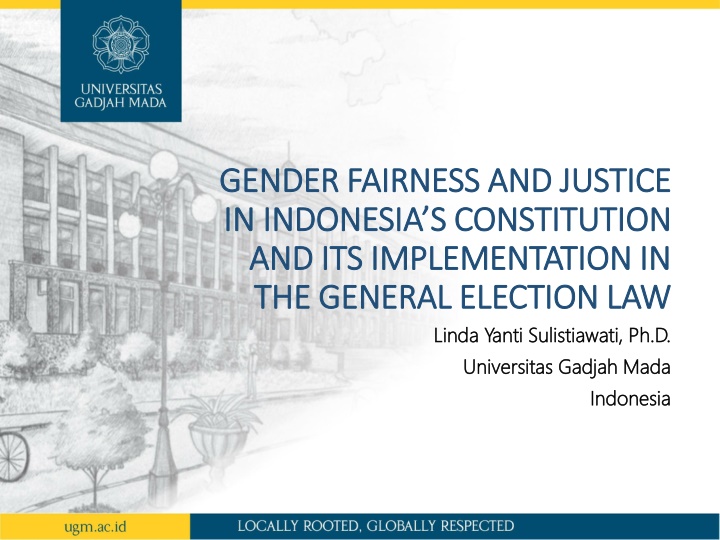
Gender Fairness and Justice in Indonesia's Constitution: A Comprehensive Analysis
Explore the journey of gender equality in Indonesia, from historical struggles to current challenges in implementing gender fairness and justice in the constitution. Understand the significance of affirmative action and the 30% quota policy in general elections, along with the need for progressive regulations to address gender discrimination effectively.
Download Presentation

Please find below an Image/Link to download the presentation.
The content on the website is provided AS IS for your information and personal use only. It may not be sold, licensed, or shared on other websites without obtaining consent from the author. If you encounter any issues during the download, it is possible that the publisher has removed the file from their server.
You are allowed to download the files provided on this website for personal or commercial use, subject to the condition that they are used lawfully. All files are the property of their respective owners.
The content on the website is provided AS IS for your information and personal use only. It may not be sold, licensed, or shared on other websites without obtaining consent from the author.
E N D
Presentation Transcript
GENDER FAIRNESS AND JUSTICE GENDER FAIRNESS AND JUSTICE IN INDONESIA S CONSTITUTION IN INDONESIA S CONSTITUTION AND ITS IMPLEMENTATION IN AND ITS IMPLEMENTATION IN THE GENERAL ELECTION THE GENERAL ELECTION LAW Linda Linda Yanti LAW , Ph. .D D. . Mada Indonesia Indonesia Yanti Sulistiawati Sulistiawati, Ph Universitas Universitas Gadjah Gadjah Mada
OUTLINE OUTLINE Background Research Questions Analysis Gender Fairness and Justice in the Constitution of Indonesia Implementation of Gender Fairness and Justice as Constitutional Rights in General Election (GE) 30% Quota Policy and Its Criticism. Conclusions
Background (1) Background (1) Patriach dominant Gender bias between men and women, most public positions are majority held by men, women are being ruled by men. In Indonesia, the struggle for gender fairness and justice started in the 18thcentury by R.A Kartini, R.A Dewi Sartika, etc, whom were struggling in the education sector (women s right for education)
Background (2) Background (2) In 1928: First Women Congress in Yogyakarta by 22 Women Organizations, resulting in Establishment of Indonesia Union of Women; Strive for regulations of womens rights in marriage and rights to not being divorced without her consent; Developing new schools for women; Estanlishing mass education and eradication of illteracy; Scholarships for high academic achiever women with lower economical background.
Background (3) Background (3) There needs to be a special efforts eradicate gender imbalances, among others through affirmative action in the house of representatives. Indonesia s constitution 1945 does not discriminate between women and men. Article 27 Constitution of 1945 gives the same appreciation to women and men, but the partiach culture interpreted it differently. Constitution 1945 accommodates gender fairness and justice in the article 28 D para (1) on equality before the law and equal opportunity in governance, article 28 H para (2) on affirmative action; and Article 28 I para (2) on anti discrimination. Affirmative action is being regulated in the General Election (GE) Law, with 30% quota for women in the GE. But after those Constitutional amendment, there are already 3 GEs but womens participation has not significantly increased. WHY? hinders gender fairness, hence Indonesia needed firmer and a more progressive regulation.
Background (4) Background (4) The current situation of gender discrimination in Indonesia is stagnant Women s representation in decision making institutions are small. GE 1955 to 1999 (8 GEs) there is only 10% not significant in decision making. Impacts of lack of women s representation, among others: Child Welfare Law no hard sanction for child abusers Citizenship Law mixed marriage deleted Indonesia s women s citizenship. Marriage Law husband is the head of the house hold, wife is the household keeper Witness and Victim Protection Law detection and investigation abuse cases openly.
Gender Fairness and Justice in the Gender Fairness and Justice in the Constitution 1945 Constitution 1945 Gender definitions: Gender does not mean sex. Mansour Fakieh : behaviour which sticks to women and men constructed socially and culturally. Gender is not natural and is a social construct. Gender bias causes women to loose acces, chances, control and benefits of development activities.
Gender Fairness and Justice in the Gender Fairness and Justice in the Constitutions Constitutions of Indonesia of Indonesia Constitution 1945 gives equal opportunity but let women to struggle within patriarchy culture without special protection RIS Constitution 1950 gives equal opportunity, anti discrimination, and special privileges Temporary Constitution 1955 gives equal opportunity, anti discrimination, and special privileges 1998--Amended Constitution 1945 believe that gender fairness and justice is part of the original intent of the substance of the constitution which gives equal opportunity, anti discrimination, and special privileges
Implementation of Gender Fairness and Implementation of Gender Fairness and Justice as Constitutional Rights in GE Justice as Constitutional Rights in GE Through extensive efforts, the Law 12 of 2003 onLegislative Election has accomodated requirement that women candidates women candidates shall constitute 30% Dissenting opinion of the 30% quota affirmative action in Legislatives (DPR/MPR): Why does it has to be 30%? It could be 20% or 50%, or even 100% if it is feasible. Why not? There is no barrier to this. It was viewed as the manifestation of pity by giving this special allocation of 30% to women. Therefore, it will instead lowering and degrading women position.
Implementation of Gender Fairness and Implementation of Gender Fairness and Justice as Constitutional Rights in GE (2) Justice as Constitutional Rights in GE (2) After the success of GE 2003 which affirmative action was adopted, Quota of 30% women representatives is being adopted the Political Party Law and the next GE Law.
Implementation of Gender Fairness and Implementation of Gender Fairness and Justice as Constitutional Rights in GE (3) Justice as Constitutional Rights in GE (3) Priority listing Priority listing in Legislative GE 2008 Law was repealed by the Constitutional Court s verdict Number 22-24/PUU-VI/2008; which lessen the probability for women to get elected. Constitutional Court s reasoning which hampers gender fairness and justice: CEDAW and Constitution 1945 are two different things, Constitutional 1945 will prevail in Indonesia. Affirmative action accepted by the Court only based on quota and zipper system (although priority listing is part of implementation of Constitution 1945 s mandate on affirmative action) Women has to endure the struggle to gain public position, based on their capacity and the accepting culture (even though, it is the gender and culture that hampers women to get public positions).
Implementation of Gender Fairness and Implementation of Gender Fairness and Justice as Constitutional Rights in GE (4) Justice as Constitutional Rights in GE (4) Dissenting opinion by the only Woman Justice in the Constitutional Court Maria Farida: justice argument : women represent half of the population and has rights of half of the seats experience argument : women have different experiences with men (biologically and socially) . Align with this argumen women can enter position of power because of they will be bound with different politics. interest group argument : women and men has different needs so men can not represent women. Women politician represent a model of importance to other women to follow. The core of the idea of affirmative action for women is to recruit more women in the political institution and make sure that women are not isolated in the political live. The repeal gave a sign of failure to the struggle of gender fairness and justice in Indonesia.
Criticism on the 30% quota Criticism on the 30% quota 30% Quota emerged from Beijing Declaration and Platform for Action. Article 182 stated: Despite the widespread movement towards democratization in most countries, women most are not represented at most levels of government, especially at the ministerial level and other executives agency, and has made little progress in achieving political power in the legislature or in achievement the target supported by the Economic and Social Council has 30 percent 30 percent of women in positions at level of decision making in 1995. Globally, only 10 percent of the members of the legislature and a the percentage of lower ministerial positions is now held by women. Indeed, several countries, including those who are experiencing fundamental political, economic and social changes have seen a a significant reduction in the number of women represented in the legislature. Even though it's a woman make at least half of the voters in almost all countries and have achieved the right to vote and holding office in almost all Member States of the United Nations, women continue to be serious underrepresented as a candidate for public office. Many traditional patterns of work are political parties and government structures continue to be obstacles to women's participation in public life. Women may be discouraged from seeking political office with discriminatory attitudes and practices, family responsibility and child care, and the high cost of seeking and holding public office. Women in political positions and decision making in government and legislative bodies contribute redefining political priorities, placing new items on the political agenda that reflect and overcome them women's gender-specific concerns, values and experiences, and provide new perspectives on mainstream political issues.
Conclusion Conclusion In Indonesia, with MPR (House of Representative) decision TAP Number VI Year 2002 on the Recommendation of the Decision of MPR by President, High Advisory Council/DPA, National Finance Supervisory/BPK, Supreme Court in the Annual Meeting of MPR on 2002, has recommended to the President to implement 30% quota on women in the .parliament to be enforced. This is previous to the 2003 GE Law From both regulations, minimum quota 30% is for definitive legislative members, not from legislative candidates (as mentioned in current Legislative GE Law). Indonesia needed to enforce a quota of 50% women in its GE Law, as France does, or a special law of 30% quota for candidature as done in Italy.

